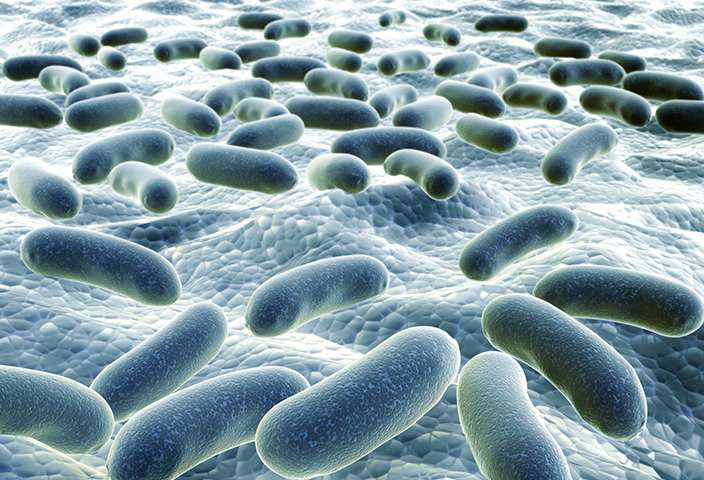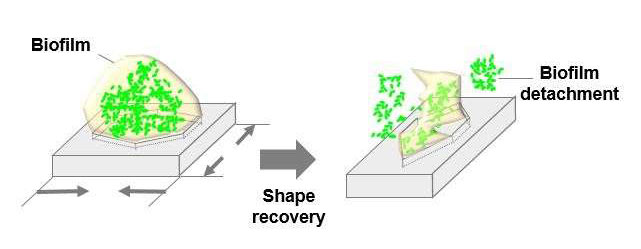Provided by Syracuse University
Click here to read the original article on phys.org

Professor Dacheng Ren, in the Department of Biomedical and Chemical Engineering and Syracuse Biomaterials Institute, and his team of researchers are seeking ways to stop the spread of microbes, and they may have found a solution. Credit: Syracuse University
Microbes, specifically disease-causing bacteria, can cause all sorts of havoc when they take hold on surfaces.
If they aren't removed quickly using the right amount of cleaning agent, they can rapidly propagate and become resistant to some cleaners and even antibiotics. These "superbugs," which include methicillin-resistant Staphylococcus aureus (MRSA), are difficult to treat and can gain a foothold in such places as medical settings.
Professor Dacheng Ren, in the Department of Biomedical and Chemical Engineering (BMCE) in the College of Engineering and Computer Science and the Syracuse Biomaterials Institute (SBI), and his team of researchers are seeking ways to stop the spread of microbes, and they may have found a solution.
In a recent study, the researchers collaborated with the lab of Associate Professor James Henderson (also in BMCE and SBI) and discovered that the use of shape-shifting polymers with topographic patterns as surfaces effectively reduces the adhesion of microbes and can remove up to 99.9 percent of attached cells.
The results appeared in the article "On-Demand Removal of Bacterial Biofilms via Shape Memory Activation" in the journal of ACS Applied Materials and Interfaces. The postdoctoral student researchers who also worked on the project are Huan Gu, Sang Won Lee and Shelby Lois Buffington.
"Microbes like to attach to surfaces," Ren says. "Basically anywhere you have water, you could have a so-called biofilm—a cluster of microbial cells that stick together. They also produce a polymeric matrix that gives them protection."
This makes them problematic for multiple reasons.
"Number one is it's very hard to kill them. Once they clump together and form a biofilm, you need up to about 1,000 times more antimicrobial agents—such as antibiotics and other cleaning agents—to kill them," Ren says.
The second problem relates to their closeness. "They can share genes and the DNA around them. Once a cell becomes resistant to something, another can become resistant," Ren says. "They can teach other because they are so close to each other."
Biofilm is really the city of the microbes, Ren says. "The biofilm protects them and allows them to survive under stress and over time to mutate and become permanently resistant to the control agents we use, especially antibiotics. That's why we need to worry about them," he says.

Photo credit: Syracuse University
Researchers in the field are looking at how to engineer a material or a surface to be less vulnerable to microbial adhesion and biofilm formation—making it less welcome to them. Earlier published work by Ren's group showed that engineering surface topography could be impactful.
"Just as you like to walk on certain surfaces but you don't like to walk on other surfaces, microbes are the same way," Ren says. "You understand what they prefer and engineer the surface so they don't come to it. That's one of the strategies."
In that particular paper, Ren and his team used hexagon patterns on the surface to reduce biofilm by about 50 percent. However, because it does not offer total prevention, over time the microbes can slowly take over. That is the challenge in controlling them—on a static surface it will only work for a certain amount of time.
Click here to read the full article

